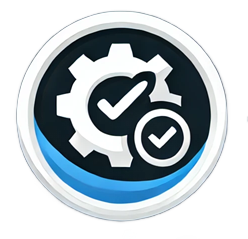
The Automation Hype vs. Reality
In today’s QA world, automation is often seen as the ultimate goal. Many testers assume that learning automation is the only path to career growth, and some even believe manual testing is becoming obsolete. But here’s the truth:
✅ I studied automation.
✅ I implemented it in multiple projects.
✅ I balanced it with manual testing.
✅ And as a QA Lead today, I still prefer manual testing in many cases.
Why? Because automation isn’t the goal—quality is. And great QA engineers know when to use the right testing method for the right scenario.
My Leadership Approach: Think Before You Automate
As a QA Lead, I don’t force my team to learn automation. Instead, I teach them to think critically about when and where it actually makes sense.
💡 My Simple Rule:
- If something is repetitive, automate it.
- If something needs human intuition, test it manually.
- If a tool can enhance testing, use AI.
🔹 Why I Don’t Push Automation as a Universal Solution:
1️⃣ Not every project needs automation. For smaller-scale or finance applications, manual validation is still crucial.
2️⃣ Automation is a tool, not a career shortcut. Promotions come from impact, critical thinking, and leadership—not just coding skills.
3️⃣ Some testers chase automation without understanding testing fundamentals. Automation is powerful, but if you can’t write a clear, well-structured test case manually, your automated test will be just as weak.
🚨 The problem?
I’ve seen stubborn engineers push automation even when it’s unnecessary, thinking it’s the only way forward. Some even refuse to use API testing after I train them because they don’t see the value in it. That’s why I focus on building a mindset, not just skills.
Why I Still Prefer Manual Testing in Many Cases
1️⃣ Manual Testing is Faster and More Efficient in Some Cases
Automation promises speed, but the reality is that setup, debugging, and maintenance take time. If I need immediate validation, manual testing wins.
🔹 Example:
- A UI bug needs urgent verification. Manually? 5 minutes. Fixing a flaky automation script? Hours.
- A quick ad-hoc test scenario might take seconds to execute manually but requires scripting and framework adjustments in automation.
Automation is great when you need to run thousands of tests at scale, but for day-to-day validation and critical bug hunting, manual testing is often the faster approach.
👉 Read more on the balance between manual, automation, and AI-driven testing here.
2️⃣ Automation Breaks, But Manual Testing Adapts
Automated tests follow strict scripts, but real users don’t. If an application changes in unexpected ways, manual testers can adjust instantly—automation scripts fail.
🔹 Example:
- A small UI change breaks automated selectors, but manual testers navigate effortlessly.
- A complex feature works fine in automated checks but feels clunky and confusing to a real user.
Automation can’t think, adjust, or question why something looks off. Manual testing does.
👉 For a deeper dive into how AI and automation are evolving, check out this article here.
Automation + AI vs. Manual + AI: What Works Best?
The real future of QA isn’t just automation—it’s how we integrate AI into testing strategies.
🚀 Automation + AI = A Powerful Combo, But Takes Time to Build
✅ Great for regression testing post-MVP.
✅ Useful when running thousands of tests at scale.
✅ Helps with pattern recognition and predictive test coverage.
⚠️ But the trade-off?
- Takes significant setup time.
- Maintenance overhead is high.
- Flaky tests can still be an issue.
👉 If you’re new to automation, check out this guide on test automation tools and frameworks here.
🧠 Manual + AI = The Smart Testing Approach
✅ Great for edge cases and catching unexpected bugs.
✅ AI-powered bug tracking & analytics make manual testers more efficient.
✅ Helps write better test cases based on historical failure patterns.
👉 Some testers hesitate to use API testing despite its value. Learn how to master API testing manually and with automation here.
Manual + Automation + AI = The QA Trifecta
The best QA approach isn’t choosing between manual or automation. It’s about using all three strategically.
🚀 The Trifecta Approach:
- Manual Testing → Exploratory, usability, and human intuition.
- Automation Testing → Repetitive tasks, large-scale regression testing.
- AI in Testing → Smarter defect detection, risk-based prioritization, and predictive analytics.
👉 Want to know how to master both manual and automation? Read this breakdown here.
Final Thoughts: Manual Testing is NOT Dead—It’s Just Misunderstood
Many testers chase automation for the wrong reasons. They assume it’s a magic bullet for promotions, efficiency, and career growth.
But the reality is:
✅ Manual testing is still faster and more efficient in many cases.
✅ Automation is powerful but needs careful implementation.
✅ AI will enhance, not replace, both manual and automation testing.
👉 As a QA Lead, I also leverage my team’s strengths. Here’s how I use team behaviors to optimize testing here.
🚀 What’s your take on the Manual vs. Automation vs. AI debate? Let’s discuss!

2 thoughts on “I Was an Automation Engineer – But as a QA Lead, I Still Prefer Manual Testing”